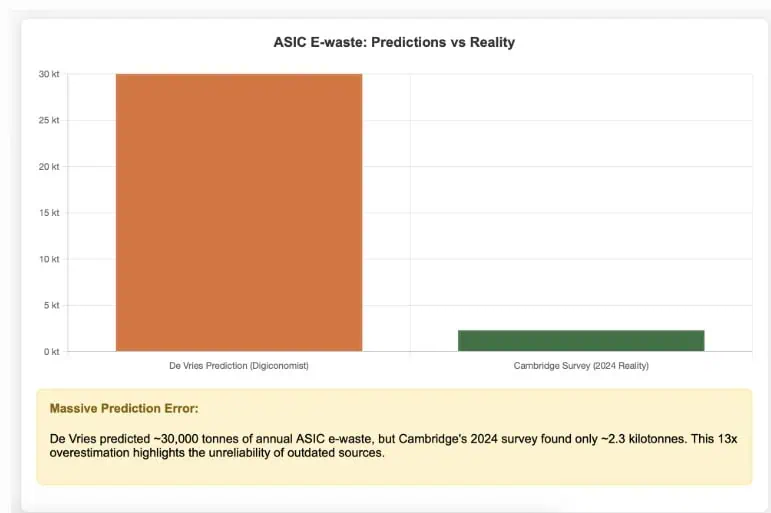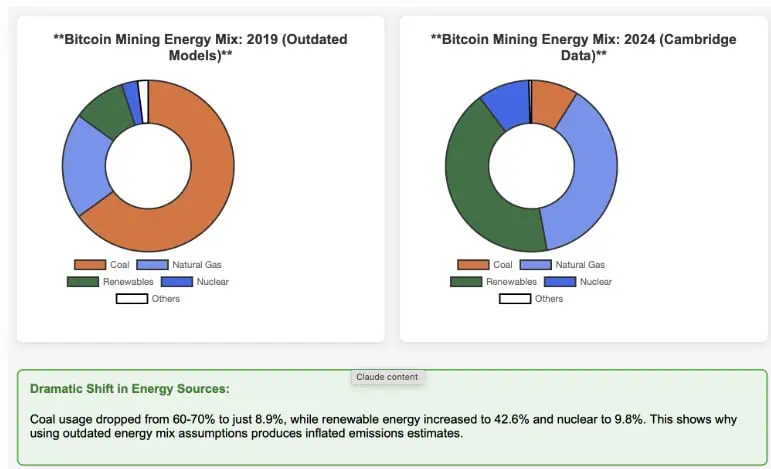
New data reveals that Bitcoin mining could mitigate emissions, balance power grids, and promote renewable energy. Updated studies contradict previous reports on the environmental impact of the leading cryptocurrency.
The relationship between Bitcoin mining and environmental and energy sustainability is being reframed by current studies that contradict dominant narratives about its environmental impact.
According to expert Daniel Batten, there are 22 investigations with contemporary data that document environmental benefits of crypto mining activity, while There are no recent studies that demonstrate direct harmThis statement, supported by the Digital Assets Research Institute (DARI), calls for a review of the foundations upon which many criticisms of Bitcoin are based.
BUY BITCOIN WITH BIT2METhe DARI report, titled 'Rebuttal of “The environmental cost of cryptocurrency: Analyzing CO₂ emissions in the 9 leading mining countries”', refutes a widely cited study for its one-sided methodology and use of outdated sources. One of the key points is the overestimation of the hashrate of countries like Kazakhstan, whose actual share levels fell from ~13% in 2021 to just ~4% in 2023.
According to report, data from the Cambridge Centre for Alternative Finance (CCAF) updated in 2025 estimates that the annual emissions associated with Bitcoin are around 39,8 MtCO₂e, i.e., only ~0,08% of global emissions.

Source: DARI
A partial evaluation produces biased results
Traditional approaches to calculating Bitcoin's carbon footprint typically omit any form of environmental offsetting. The criticized study only accounts for gross CO₂ emissions, ignoring mitigating actions such as using surplus electricity or burning waste methaneThe latter, according to Cambridge, could reduce net emissions by up to 25%.
Furthermore, Bitcoin mining has proven capable of adapting to the demands of the electrical system, providing relief in critical times.
In Texas, during a winter storm in 2022, mining operations reduced their load by 1,4 GW, helping to stabilize the grid. In 2023, this flexibility is estimated to have led to a voluntary curtailment of 888 GWh, providing resilience to the electric system.
BUY AND MANAGE BITCOINDARI exposes reference flaws and outdated models
According to the institute, several sources used in negative analyses of Bitcoin have been refuted or are now outdated. One example is the projection by Mora et al. (2018), which predicted global warming exceeding 2°C due to its adoption. This estimate was refuted in 2019 by Nature Climate Change, which he called implausible.
There are also conflicting figures on e-waste. While Digiconomist estimated around 30 tons of ASIC waste per year, the Cambridge 2025 survey found only 2,3 kilotons, explained by the increasing recycling and reuse of mining hardware. Other studies, such as those by Sai and Vranken (2023), reinforce this discrepancy.

Source: DARI
Bitcoin mining as a driver for renewable energy development
Recent research points to positive environmental effects that have been excluded in critical studies. Mining may become a vehicle for sustainable generation, both for its use of clean energy and for its role in the development of renewable infrastructure.
A Cornell study (2023) shows that mining revenues can be crucial for making solar and wind projects economically viable in their early stages. This alternative financing model could boost new energy capacities that would otherwise be postponed.

Bitcoin 101 Course
Medium levelIn Bit101Me Academy's Bitcoin 2 Course you can continue your crypto education and learn what Bitcoin is, where it comes from and how to obtain it.
Considering all the above, the latest CCAF data paint a different picture than that shown in the 2018 models. Currently, 52,4% of the energy used in Bitcoin mining comes from sustainable sources, with 42,6% coming from renewable energy and another 9,8% from nuclear generation. Coal use has also decreased dramatically, reaching just 8,9%.

Source: DARI
All these advances have allowed that, despite the growth of the global hash rate of the Bitcoin network, Total emissions have remained practically stable since 2019.
Ultimately, looking to the future, Bitcoin mining is showing an alternative path where technology, finance, and energy innovation can converge to foster positive change that many previously didn't consider.
BUY BITCOIN FAST AND SAFE

